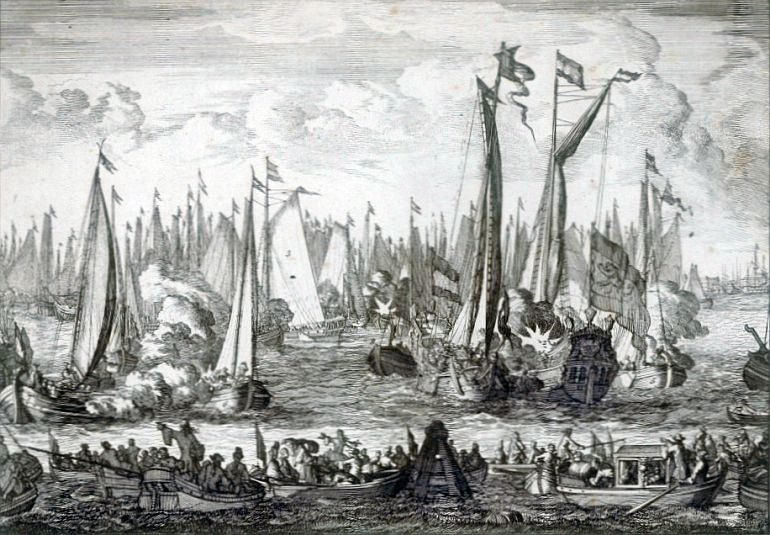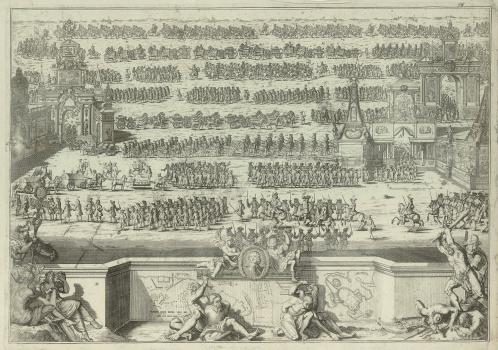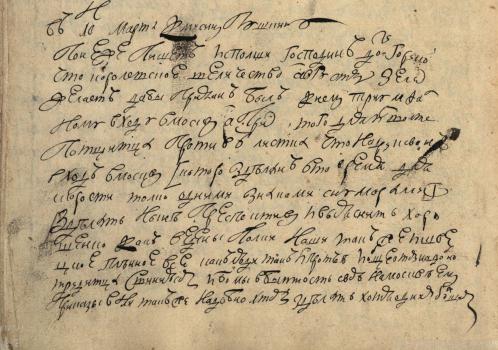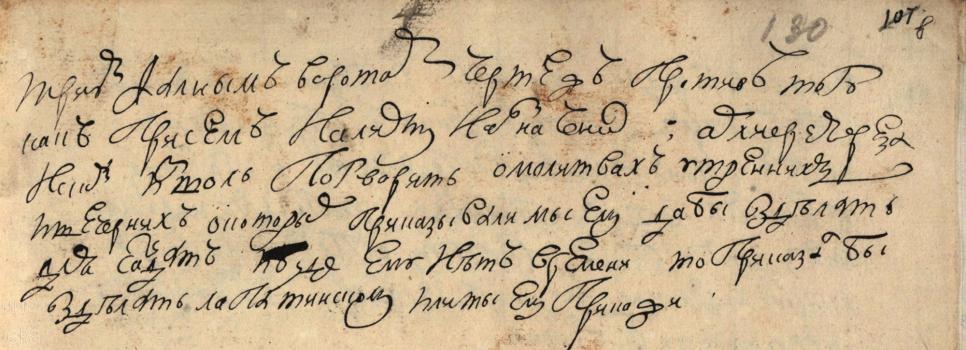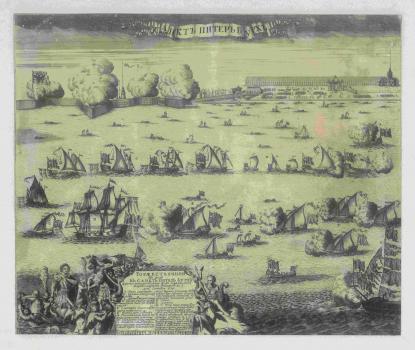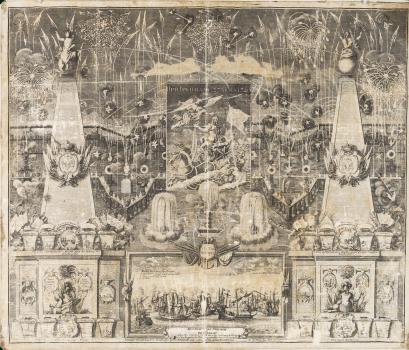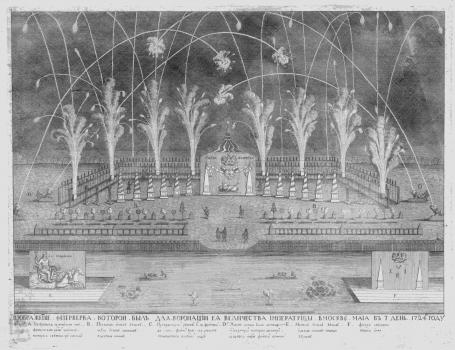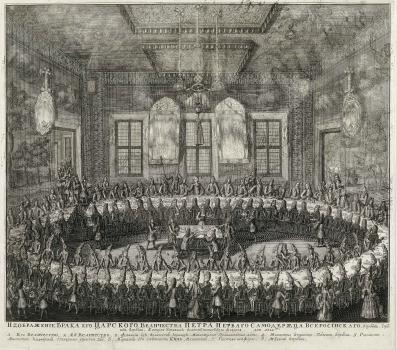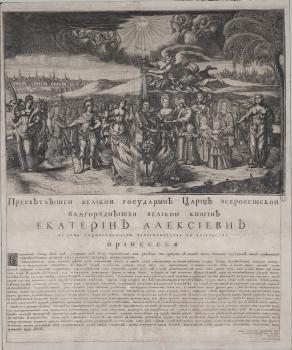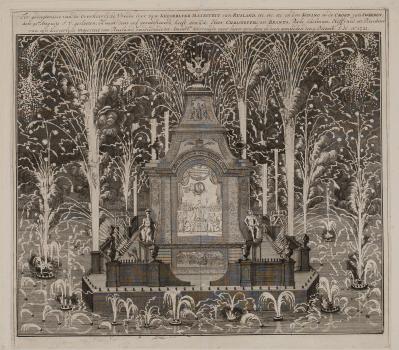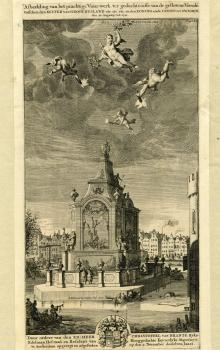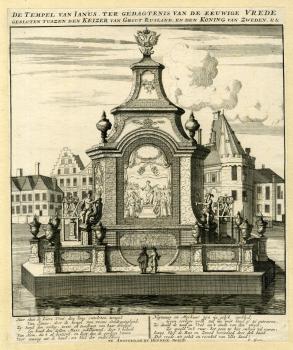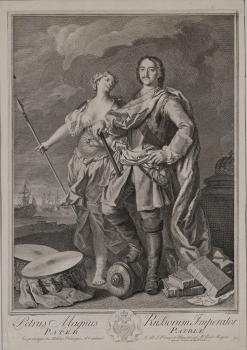"For the knowledge of all the people": engravings of the time of Peter the Great in the collection of the National Library of Russia. Marking the 350th anniversary of Peter the Great
Festive Events
Spectacular engravings of the time of the Peter the Great сaught the trend of the time, aimed at the conscious glorification of the monarch and the country. Prints feature all sorts of solemn, spectacular, theatrical performances dedicated to the victories of the army. Bright examples of such engravings depicting military triumphs and fireworks are presented at the exhibition. The first event to note is the "ceremonial entrance" of Peter the Great to Moscow in 1709 after the Poltava victory. Festivities events, colored with fireworks, lasted ten days, from December 21, 1709, to January 1, 1710. Several triumphal gates were erected in Moscow to meet the Russian forces. The "ceremonial entrance" to Moscow on December 21, 1709 was shown on engravings by two masters: Alexei Zubov and Pieter Picart.
On March 10, 1710, Peter I wrote to the head of the Printing House, Ivan Musin-Pushkin, that Grigory Dolgoruky, Russia's ambassador to Poland, had relayed to him a request of the Polish king Augustus II to send an engraving depicting the solemn entry of the Russian army into Moscow in December 1709 on occasion of the victory near Poltava. Peter I asked Musin-Pushkin to make an engraving, with particular attantion to the accurate depiction of the entering Russian regiments and captured Swedes, and also to produce an engraving depicting at least one triumphal gate erected in Moscow especially for this solemn procession.
Naval victories were celebrated with festive events in the same way during the reign of Peter the Great. So, a big water festival dedicated to the Gangut victory was held by Governor-General Alexander Menshikov in the young capital St. Petersburg. Captured Swedish ships were brought into the city along the Neva. The second part of the celebration was land based: the solemn procession passed through a specially erected triumphal arch. The cartouche of the engraving, commenting on the image, contains the programme of the holiday. The engravings was distributed among the army and navy, and also went on open sale.
St. Petersburg fireworks, dedicated to the next great naval victory of the Russian fleet near Grengam Island on July 27, 1720, were depicted on a German silk print engraving presented at the exhibition.
Fireworks and their images in engravings played an important role not only in military but also in secular culture. A good example is the engraving produced on the occasion of the coronation of Catherine I. The coronation of 1724 was marked by the extraordinary splendor and truly imperial scope. "European" elements of the coronation, the imperial crown and ermine mantle, were first used for Catherine I in 1724. Peter the Great wanted to raise the status of his wife in the public eye, as well as to demonstrate the greatness of imperial power. The decree on succession to the throne, issued a couple of years earlier, abolished the ancient tradition according to which only heirs in the male line could inherit the Russian throne, and proclaimed a new order by which the sovereign himself could announce a successor. Cathrine I seemed to Peter the only suitable candidate for the throne, but in his lifetime, the emperor did not have time to appoint an heir to the throne. Fireworks dedicated to the coronation of Catherine I was depicted on an engraving by Ivan Zubov, printed in 1725,
